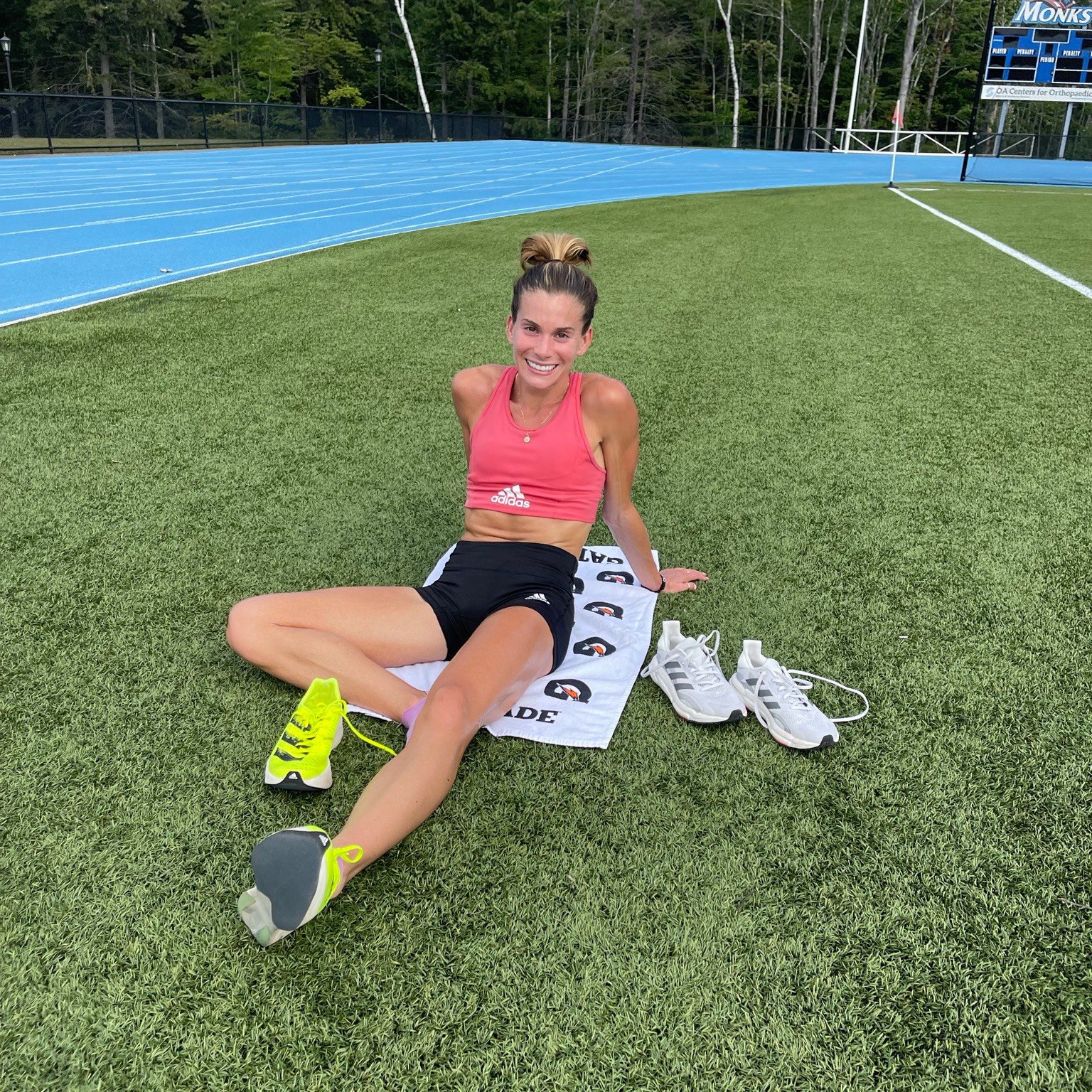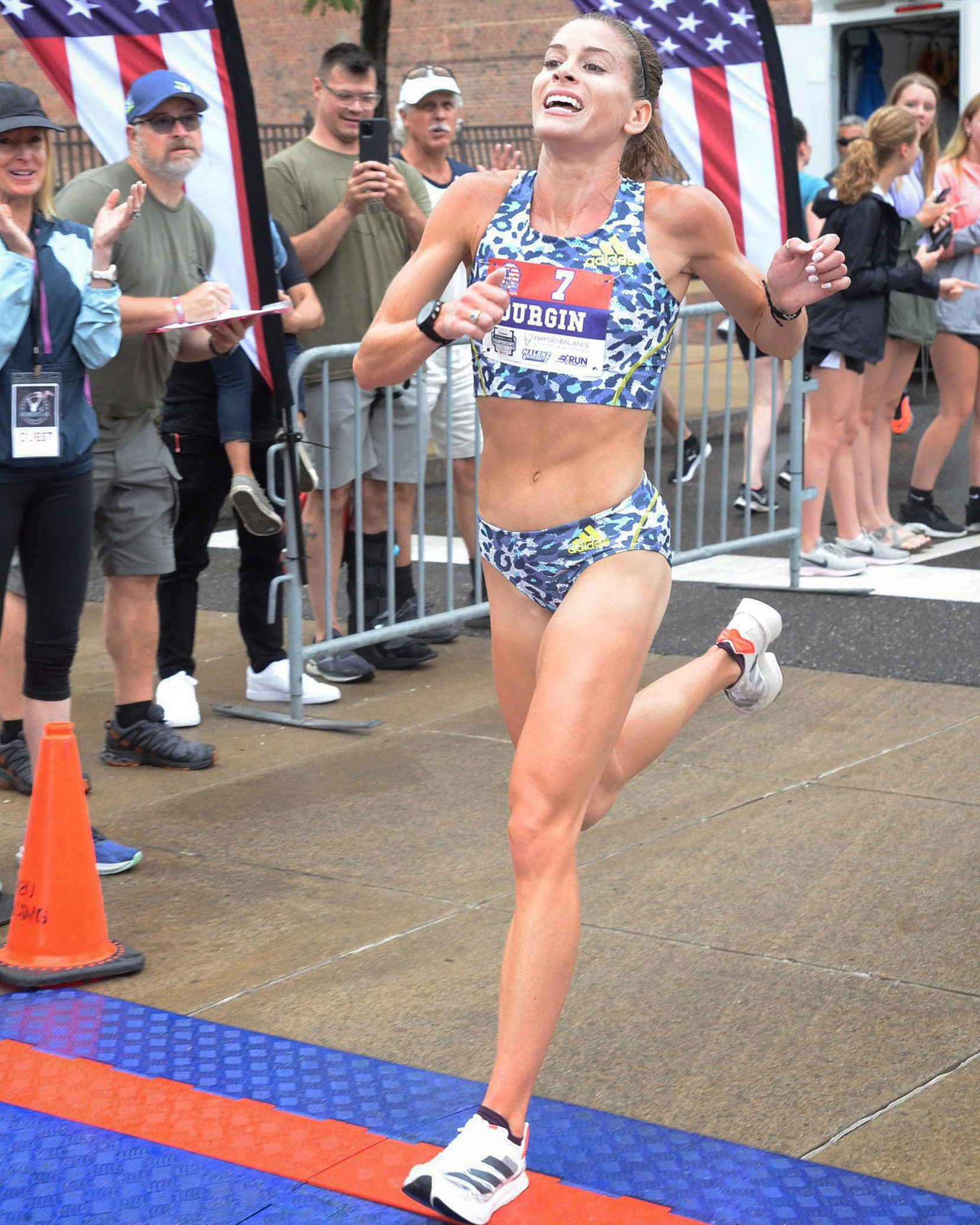How to Run a Marathon — or a 5k

Durgin at St. Joseph's College of Maine, home for summer training.

Durgin crossing the line for a silver at the U.S. 6K championships in Canton, Ohio, last year.
After her top-10 finish in the 10K final at the 2021 Olympic trials, Emily Durgin '17 (CLAS), who won nine American Athletic Conference individual championships at UConn while earning her journalism and communications degree, decided to take it up a notch.
She plans to move to marathon distance for a run at the 2024 trials. "I knew going for an Olympic team in 2021 was a bit of a reach," Durgin says. "I was very happy to finish ninth. It told me — hey, I can make this team. Just have fun with it."
Moving to marathons will include a buildup period and the Standish, Maine, native is looking at the Boston Marathon as a possible early measuring stick.
However, she says, "Boston can be challenging because of the downhill and uphill. I have to make sure the first one doesn't beat me up."
Taking things too fast is a trap both professional and novice runners can easily fall into, says Durgin. She advises against overtraining and trying to do too much too quickly.
"We all want to get in shape quicker. But over the years, I have definitely learned you have to listen to your body."
Her best advice is to tackle things gradually, slowly working up the distance on big runs. "You can go from an hour to 90 minutes," she says. "You want to work up slowly to get used to being on your feet for a long time."
Another pro tip is to mix it up. Cross-training activities like swimming, kayaking, or golf keep runners fit while giving them a break from training for a 5K, 10K, or marathon.
Durgin is grateful for her time as a Husky team captain.
"UConn taught me how to be a leader to others," she says. "I have continued to be a leader when it comes to representing my brand, Adidas, and myself. I take a lot of pride in being an example for younger runners wanting to run after college."
By BRIAN HUDGINS
Photos courtesy of Emily Durgin

Leave a Reply